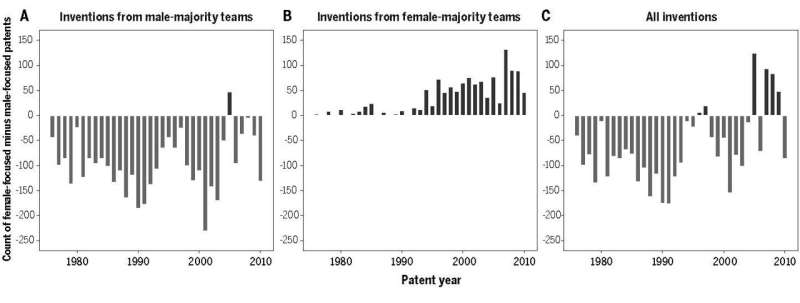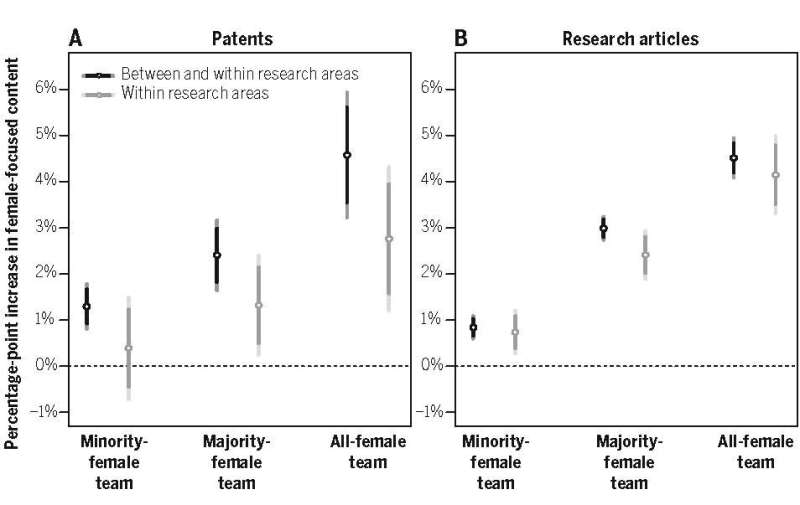Panel A shows that male inventors have invented more for men than for women, which in turn has resulted in a sizeable gap in the sex focus of invention shown in Panel C since more men get to invent. However, Panel B shows that, after four decades of progress, the rise in femalefocused and -invented patents has shrunk and sometimes reversed that gap. Credit: Koning et al., Science (2021)
A trio of researchers from Harvard University, Universidad de Navarra and McGill University has found evidence that suggests fewer women receiving biomedical patents means that fewer inventions for devices or drugs to treat women are being developed. In their paper published in the journal Science, Rembrand Koning, Sampsa Samila and John-Paul Ferguson describe their study of patents awarded to inventors and what they found. Fiona Murray, with MIT, has published a commentary in the same journal issue outlining the work by the researchers in this new effort and describes how their findings fit in with those of other researchers who have looked into the issue of gender bias in the sciences.
Prior research has shown that women are underrepresented in science—both as students and as people who work in science fields. As a result, fewer women are working on efforts to develop medical devices or drugs to treat medical conditions. In this new effort, the researchers suggest this bias has led to harm to women, both in and out of the science community. They suggest the lack of women working on developing biomedical applications has led to fewer developments that address female-specific problems, as women are more likely to develop applications to address women's problems than are men.
The work involved obtaining access to U.S. biomedical patent information for the years 1976 to 2010 and then applying machine learning to the data. In so doing, they were able to see gender patterns. They found, for example, that inventor teams receiving biomedical patents that had equal numbers of male and female researchers grew from 6.3% of all those granted in 1976, to 16.2% in 2010. But they also found that teams made up mostly of women were 18% more likely to hold patents for applications that would help women. This indicates that if more teams had had more female members, more products geared toward resolving female problems would have been developed—they estimate the number of applications not developed due to this bias came to approximately 6,500 over the past 50 years.
Regression analyses show that patents with more women are more likely to be female-focused both within and across research areas. The same pattern holds for potentially patentable research. These patterns suggest that many promising female-focused medical treatments have yet to be commercialized because few women get to patent and invent. Credit: Koning et al., Science (2021)
More information: Rembrand Koning et al, Who do we invent for? Patents by women focus more on women's health, but few women get to invent, Science (2021). DOI: 10.1126/science.aba6990
Fiona Murray, Mothers of invention, Science (2021). DOI: 10.1126/science.abh3178
Journal information: Science
© 2021 Science X Network
























